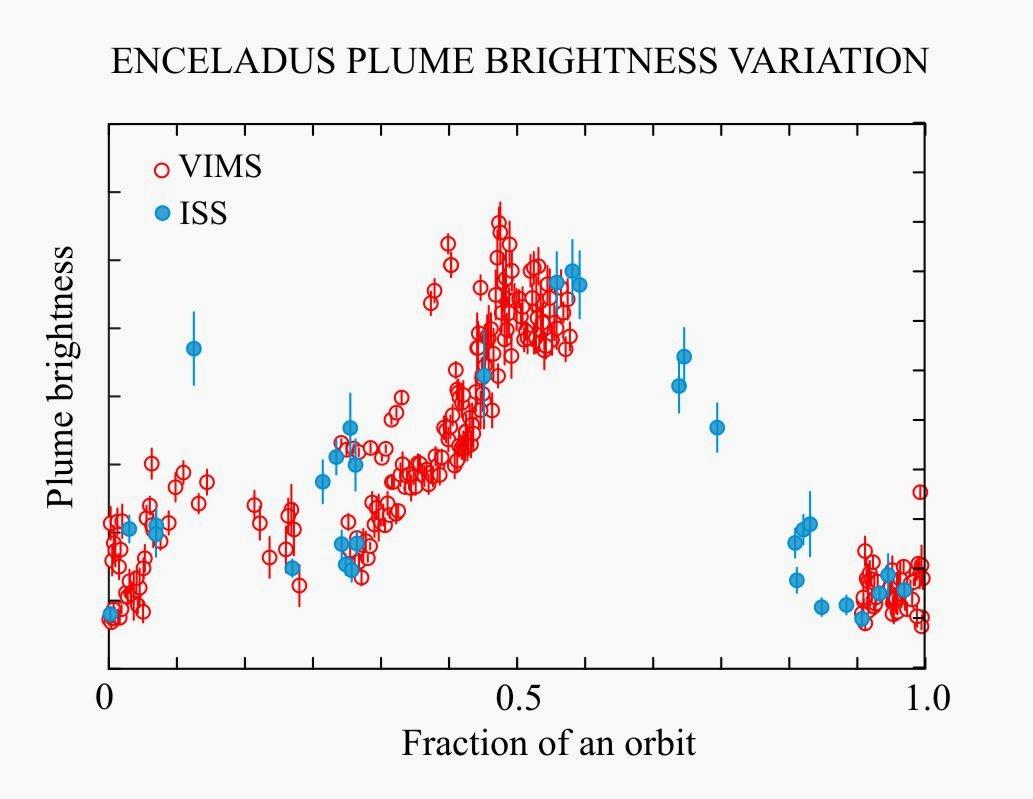Enceladus’ Plume Brightness Variations

| PIA Number | PIA17187 |
|---|---|
| Language |
|
This plot shows the variation in brightness of the plume of material, composed of all the geysers erupting from the south polar terrain of Saturn's moon Enceladus, as a function of the moon's orbital position around Saturn. Two observation sets are shown here: the blue dots (ISS) are data collected from images taken in the visible portion of the spectrum with Cassini's imaging cameras, and the red circles (VIMS) are data collected by Cassini's visual and infra-red mapping spectrometer.
Both indicate a brightening of the plume at approximately the same orbital position, which is delayed relative to predictions based on a simple tidal stress model. However, the ISS data cover a complete orbit and allow the width of the brightness signal to be measured.
The correlation of plume brightness with orbital position implies that tidal stresses are important, but other effects are undoubtedly present. These range from a delay in the eruption of materials to the surface, to a very viscous ice shell that responds slowly to tidal forcing, to the presence of periodic variations in the moon's spin.
Additional observations of the plume throughout the remainder of the Cassini mission, as well as the development of more complete theoretical models, are planned to address this issue.
A version of this plot was presented in a paper by Nimmo, Porco, and Mitchell, and published in the online version of the Astronomical Journal in July 2014: http://dx.doi.org/10.1088/0004-6256/148/3/46 .
A companion paper, by Porco et al. is available at:
http://dx.doi.org/10.1088/0004-6256/148/3/45 .
